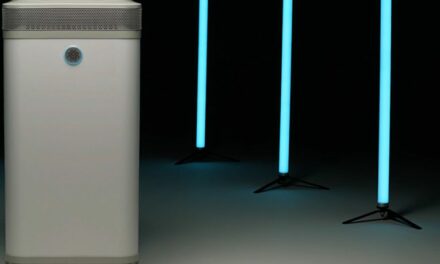Masimo, Lebanon, NH, announces the findings of a recently published study in which researchers at Dartmouth-Hitchcock Medical Center investigated the impact of an integrated clinical monitoring system, using various Masimo technologies and devices, on clinical workflow and patient care in the general ward. The researchers sought to “demonstrate the application of systems-level design and analysis to measure the impact of clinical monitoring on key workflow and system characteristics that contribute to early detection of patient deterioration.”
To evaluate workflow impact through the use of the enhanced monitoring system, the researchers collected data from two general wards with 71 beds, for five months prior to and five months after implementation. They collected the same data for the full 10 months in a control unit consisting of two general wards with 61 beds total, which did not have any system changes. In both the study and control units, prior to implementation, the baseline monitoring system consisted primarily of Masimo Rad-87 Pulse CO-Oximeters, for continuous and spot-check (vital signs) measurements using Masimo SET pulse oximetry, and Masimo Patient SafetyNet, a supplemental remote monitoring and clinician notification system, used for data processing and archiving.
The enhanced monitoring system, implemented in the study unit, added Masimo Root with Radius-7 wearable Pulse CO-Oximeters. Root is a patient monitoring and connectivity platform that includes such features as built-in blood pressure and temperature measurements, a barcode reader and integration with the hospital’s admission-discharge-transfer (ADT) system, and integration with Patient SafetyNet and the hospital’s electronic medical record (EMR) system for automated capture of patient monitoring and vital signs data, including from connected third-party devices. Radius-7 is a tetherless, wearable monitor that allows patients to be mobile while still being continuously monitored, with data sent wirelessly via Bluetooth or WiFi to Root, eliminating the need for nurses to manually place bedside monitors in standby mode and disconnect sensors each time a patient leaves the bed.
Key points of comparison and results included:
Monitoring system utilization: The researchers noted a significant increase in the number of hours patients were continuously monitored after implementation. Monitored hours per patient day increased from mean 17.26 hours to 19.57 hours (p < 0.0001) and monitored hours per month from mean 15,931.25 hours to 19,053.3 hours (p < 0.0001).
Vital signs documentation: With the implementation of Root and its ability to automatically upload patient data, including pulse oximetry and blood pressure and temperature measurements, to Patient SafetyNet and the EMR, researchers noted a significant decrease in the time required to obtain and record vital signs: mean assessment time dropped from 178.8 seconds to 128.9 seconds (p < 0.0001), representing an average time savings of 3 hours per day in a 36-bed unit.
Patient information: The researchers measured the rate at which certain patient data fields were filled out in the EMR for one month before and after implementation. Patient last name presence increased from 98.92% to 100% presence (p = 0.0083). Patient first name and room and bed presence increased from 33.75% and 57.27%, respectively, to 100% (p < 0.0001).
Clinical staff satisfaction: Three months after implementation, hospital staff feedback was solicited in a 16-question survey which had a 65% response rate and overall “very high” satisfaction with the enhanced monitoring system.
Alarms: The researchers found that there was a significant increase in the number of clinical alarms per patient day (rate ratio 1.46, p = 0.0263) but not per monitored hour (rate ratio 1.34, p = 0.1090), which they believe is “logical when considering [the] additional time each patient [was] monitored.”
“The enhanced monitoring system received high staff satisfaction ratings and significantly improved key clinical elements related to early recognition of changes in patient state, including reducing average vital signs data collection time by 28%, increasing patient monitoring time (rate ratio 1.22), and availability and accuracy of patient information. Impact on clinical alarms was mixed, with no significant increase in clinical alarms per monitored hour.” The researchers concluded.
In previous studies conducted at Dartmouth-Hitchcock, researchers found that continuous monitoring of adult post-surgical patients using Masimo SET, in conjunction with Masimo Patient SafetyNet, resulted in a 65% reduction in rapid response team activations and a 48% reduction in transfers back to the ICU. Over five years, they achieved their goal of zero preventable deaths or brain damage due to opioids, and over 10 years, they maintained a 50% reduction in unplanned transfers and a 60% reduction in rescue events, despite an increase in patient acuity and occupancy.
“We are incredibly grateful to Dartmouth-Hitchcock for their continued long-term research into the utility of continuous patient monitoring on the general floor and the benefits that holistic, integrated monitoring systems can provide,” says Joe Kiani, founder and CEO of Masimo. “Continuous monitoring of all patients on opioids is clearly the path forward, with the potential to make significant improvements in patient safety and quality of care. We look forward to continuing to learn from Dartmouth-Hitchcock’s data and improving our technologies and integrated solutions.”




